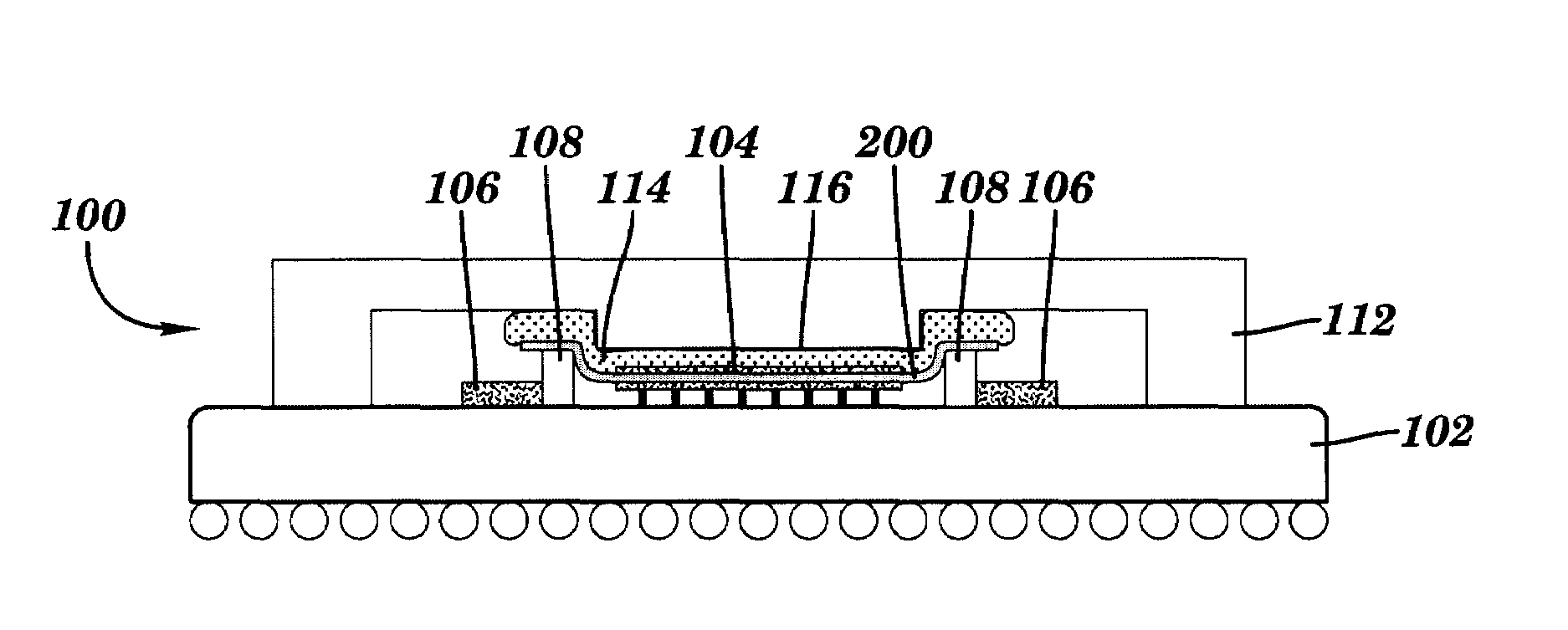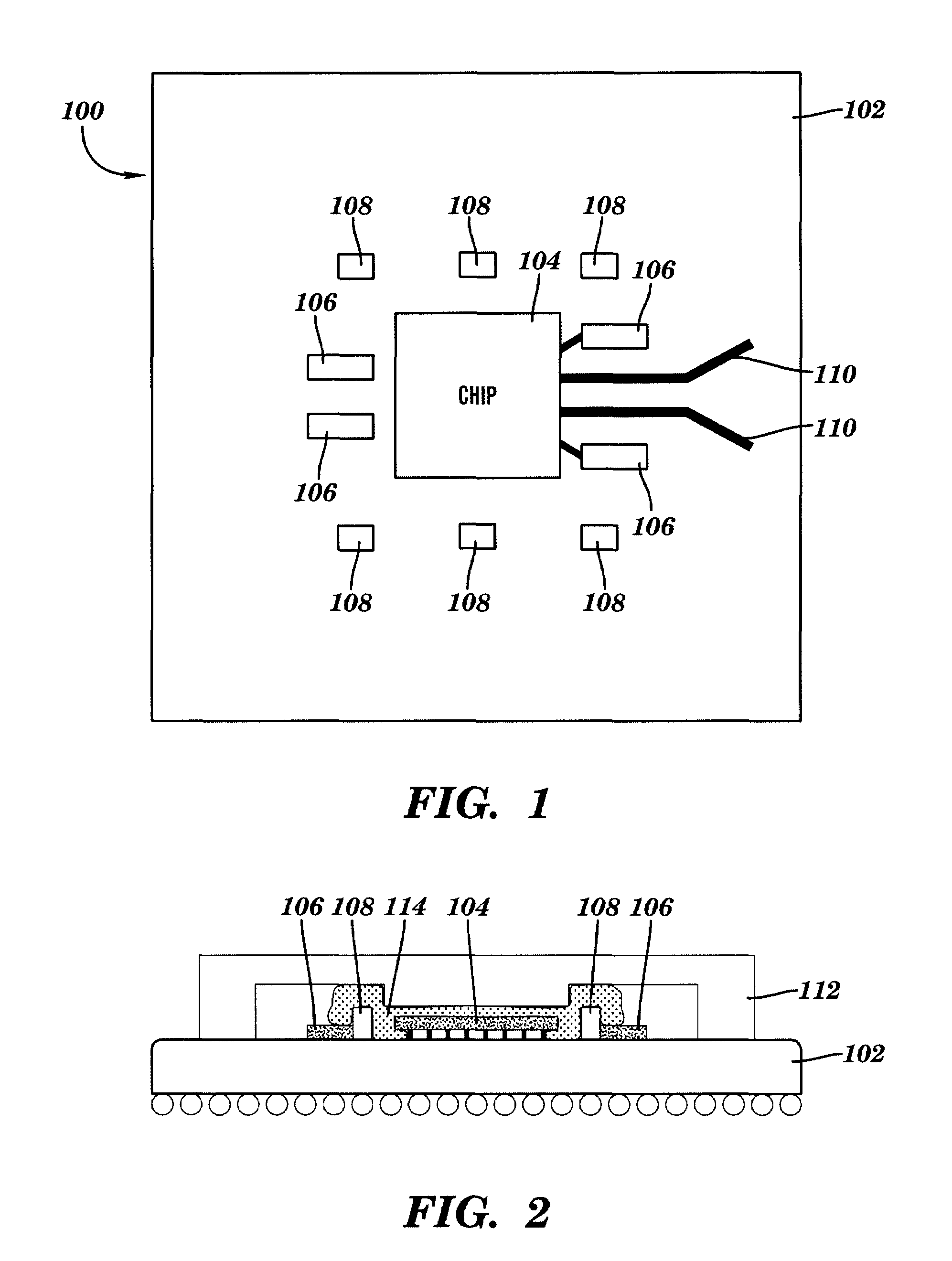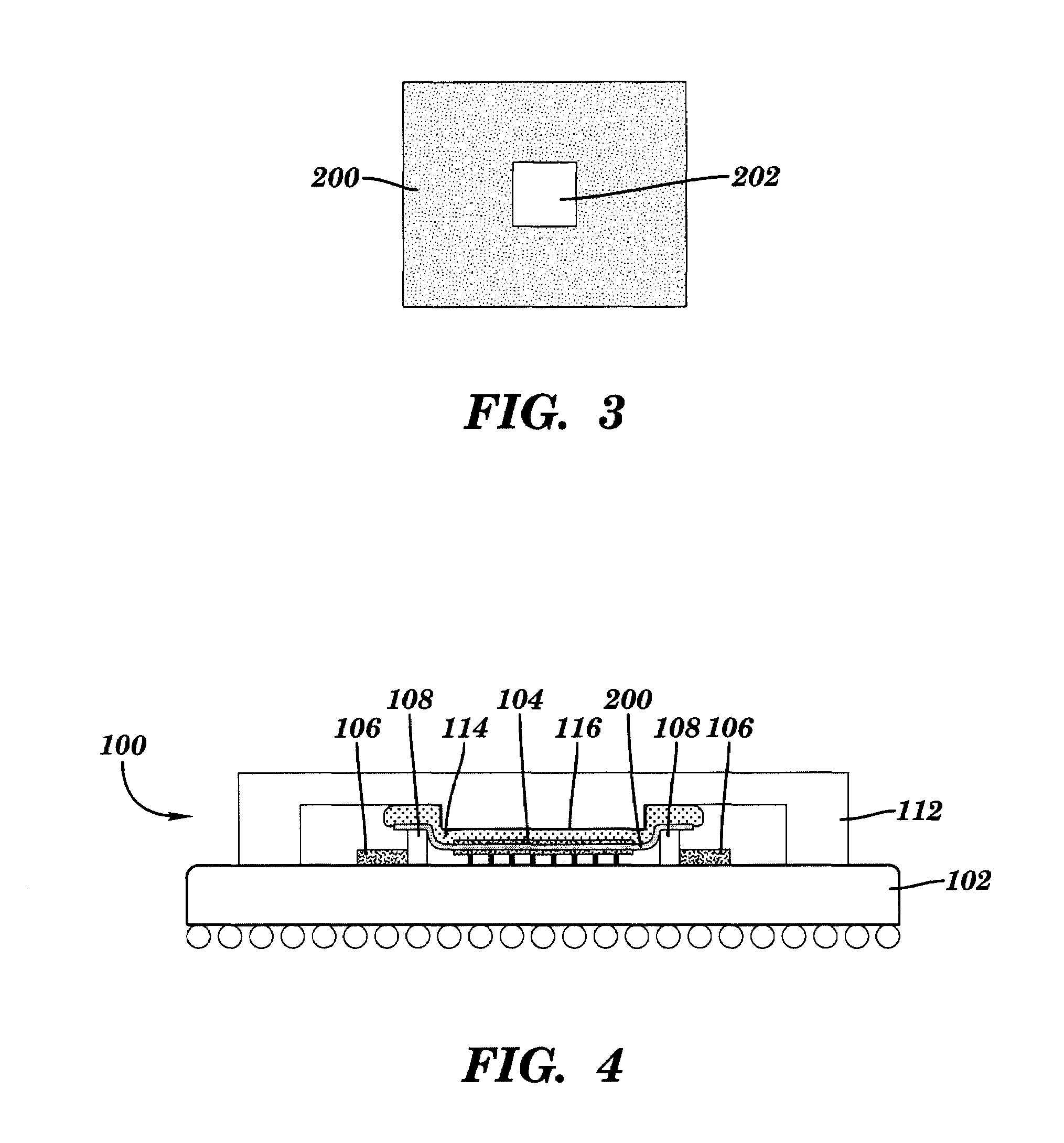Method and structure for selective thermal paste deposition and retention on integrated circuit chip modules
- Summary
- Abstract
- Description
- Claims
- Application Information
AI Technical Summary
Benefits of technology
Problems solved by technology
Method used
Image
Examples
Embodiment Construction
[0018]Referring initially to FIG. 1, there is shown a plan view of an exemplary integrated circuit chip module 100, suitable for use in accordance with an embodiment of the invention. The module 100 includes a substrate 102 having one or more integrated circuit (IC) chips 104 mounted thereon. In addition, a plurality of discrete, stand-alone electronic components are included on the substrate including, for example, surface mounted resistors 106, decoupling capacitors 108, and conductive microstrip traces 110. As shown in the cross-sectional view of FIG. 2, a metallic cap 112 or lid is attached to the surface of the substrate 102 for mechanically protecting the chip 104, and to provide a heat transfer path from the back of the chip 104 to the external cooling environment. In order to enhance heat transfer, a highly thermally conductive paste 114 containing ceramic, metal and / or metal oxide particles or the like (e.g., ATC 3.8) is applied between the back of the chip 104 and the cap ...
PUM
 Login to View More
Login to View More Abstract
Description
Claims
Application Information
 Login to View More
Login to View More - R&D Engineer
- R&D Manager
- IP Professional
- Industry Leading Data Capabilities
- Powerful AI technology
- Patent DNA Extraction
Browse by: Latest US Patents, China's latest patents, Technical Efficacy Thesaurus, Application Domain, Technology Topic, Popular Technical Reports.
© 2024 PatSnap. All rights reserved.Legal|Privacy policy|Modern Slavery Act Transparency Statement|Sitemap|About US| Contact US: help@patsnap.com










